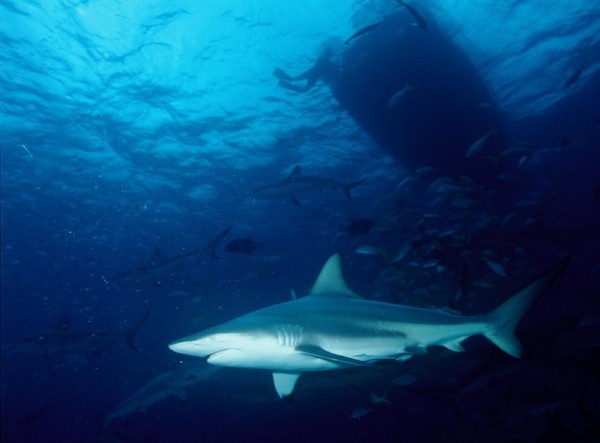By Ana Verayo, | February 15, 2016

Blacktip sharks migrate near Palm Beach County, Florida for the winter.
Thousands of blacktip sharks are now making Palm Beach, Florida their new winter home just near the county's coast. The head of Florida Atlantic University's shark lab, Stephen Kajiura, has been studying how these yearly visits can affect the local ocean ecosystems.
Like Us on Facebook
Beginning from Miami to Jupiter, the team carried out an aerial survey some 500 feet above 10,000 sharks that are gathered, just 200 yards from the beach. He says that the majority of sharks are mostly found near Palm Beach and Singer Island, so near that one can stand on the shore and throw a pebble, that could potentially hit a shark.
The team will attempt to head out by boat to tag some sharks. Kajiura says that the sharks can be lured beside the boat so the team can obtain their measurements and so that transmitters can be placed on some individuals. The sharks are estimated to be about six feet at the most, he adds.
The team also plans to fly once a week for a survey and fish once a week until March, before the sharks head north for the summer. Kajiura says that the team plans to study the natural habitat of blacktip sharks as this is considered to be a significant seasonal influx of predators, that can change the local ecosystem.
Shari Tellman who is an environmental specialist of the Florida Department of Health Palm Beach County works with Kajiura on blacktip shark research for the past several years where they count over sharks over flights, obtaining video footage and photographs.
Kajiura, Tellman and the team at Florida Atlantic University have been successful at documenting the local population of this species over the years, where they now have baseline numbers and data for future research.
Tellman notes how crucial this shark migration is, which is also linked with water temperatures and shark population density, revealing that a change in the sharks' pattern can indicate the effects of climate change. The team also says that the tagged sharks are now migrating farther up north than their normal range.
The International Shark Attack File also released new data for 2015's total shark attacks. In the United States, Florida yielded 30 cases which makes up for 50 percent of the total shark bites in the country for last year. For the rest of the world, Florida accounted for 31 percent of 164 shark attacks that was monitored by the organization, where two attacks occurred in Palm Beach County.
Kajiura says that even if there are is a massive amount of sharks, more than 10,000 of them from Palm Beach to South Florida, there are only relatively few bites. Tellman adds that the locals' fear of the shark species is not confirmed, describing that the species' teeth are relatively tiny to other shark species.
-
Use of Coronavirus Pandemic Drones Raises Privacy Concerns: Drones Spread Fear, Local Officials Say

-
Coronavirus Hampers The Delivery Of Lockheed Martin F-35 Stealth Fighters For 2020

-
Instagram Speeds Up Plans to Add Account Memorialization Feature Due to COVID-19 Deaths

-
NASA: Perseverance Plans to Bring 'Mars Rock' to Earth in 2031

-
600 Dead And 3,000 In The Hospital as Iranians Believed Drinking High-Concentrations of Alcohol Can Cure The Coronavirus

-
600 Dead And 3,000 In The Hospital as Iranians Believed Drinking High-Concentrations of Alcohol Can Cure The Coronavirus

-
COVID-19: Doctors, Nurses Use Virtual Reality to Learn New Skills in Treating Coronavirus Patients







